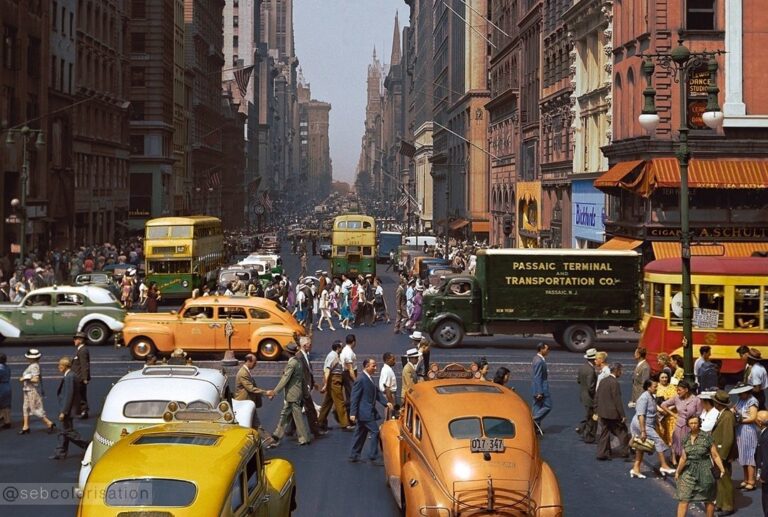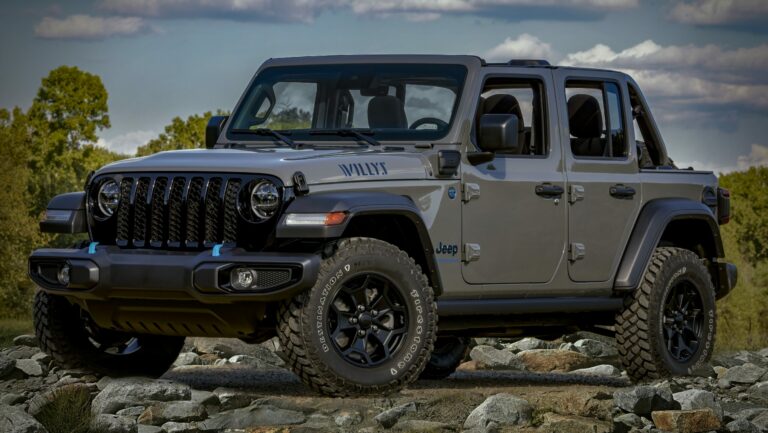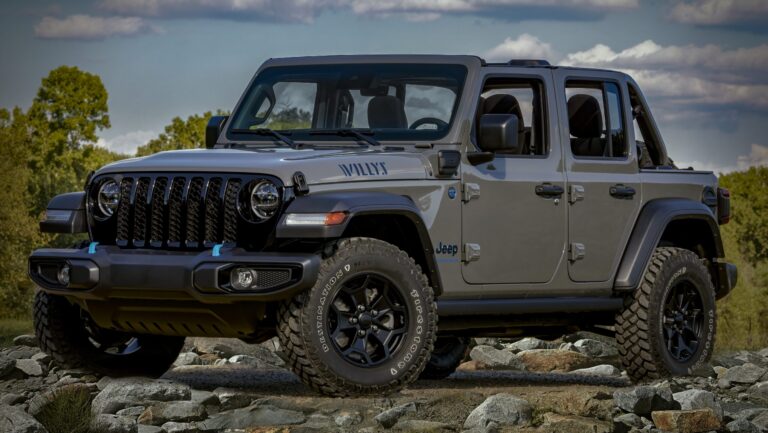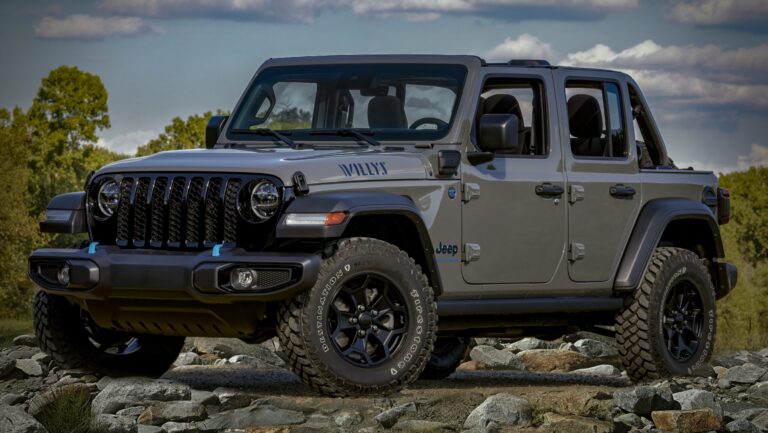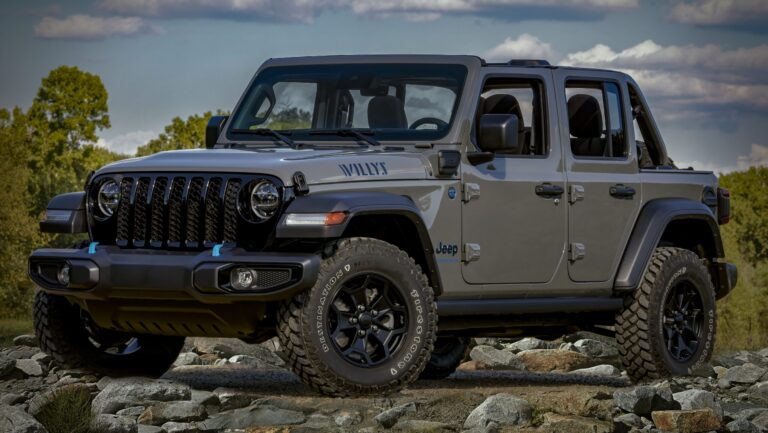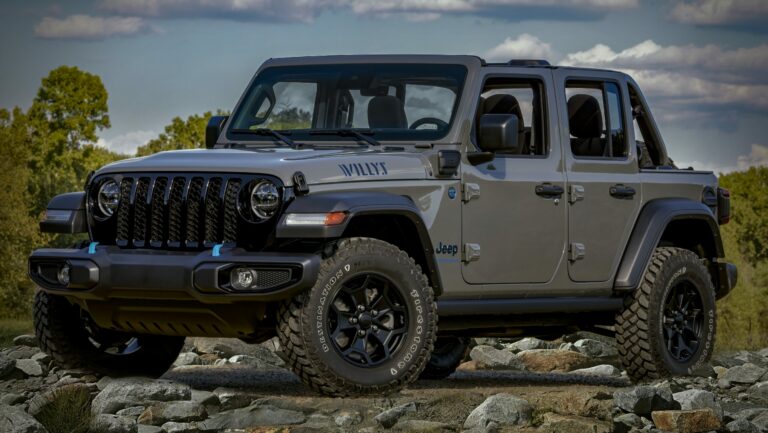1940 Willys Jeep For Sale: Owning a Piece of Automotive History
1940 Willys Jeep For Sale: Owning a Piece of Automotive History jeeps.truckstrend.com
The roar of an engine, the rugged silhouette, the unmistakable sense of history – few vehicles evoke such a profound connection to the past as the Willys Jeep. When we speak of a "1940 Willys Jeep For Sale," we are not merely discussing an automobile; we are talking about a rare, tangible artifact from a pivotal moment in human history. This article serves as a comprehensive guide for anyone captivated by the allure of this legendary vehicle, exploring its historical significance, what to look for when buying, the nuances of ownership, and the true meaning behind a "1940" designation for these iconic machines.
The Unyielding Spirit of the 1940 Willys Jeep
1940 Willys Jeep For Sale: Owning a Piece of Automotive History
The Willys Jeep is, without doubt, one of the most iconic vehicles ever produced. Its rugged utility, go-anywhere capability, and pivotal role in World War II cemented its legendary status. Designed as a light reconnaissance vehicle for the U.S. Army, the Jeep quickly became the backbone of Allied forces, praised by General Dwight D. Eisenhower as one of the three decisive weapons of the war (alongside the Dakota airplane and the Bazooka).
While most people associate the Willys MB (the primary wartime production model) with the years 1941-1945, the mention of a "1940 Willys Jeep For Sale" points to an even rarer and more historically significant category: the prototypes and very early pre-production models that laid the groundwork for the beloved MB. These early iterations represent the very genesis of the Jeep, embodying the ingenuity and rapid development required to meet the demands of a world on the brink of war. For collectors and enthusiasts, acquiring a vehicle from this initial design phase is akin to owning a piece of the automotive industry’s most impactful creation story.
A Glimpse into History: The Elusive 1940 Willys Prototypes
The journey to the standardized Willys MB was a competitive one, involving three key manufacturers: American Bantam, Willys-Overland, and Ford. In the summer of 1940, the U.S. Army issued a highly demanding specification for a new light reconnaissance vehicle, requiring prototypes to be delivered in an astonishingly short 49 days.
- Bantam BRC-40: Bantam was the first to deliver, presenting their prototype in September 1940. While Bantam essentially designed the vehicle that would become the Jeep, their production capacity was limited.
- Willys Quad: Willys-Overland submitted their prototype, the "Willys Quad," on November 11, 1940. This vehicle, designed by Delmar "Barney" Roos, featured Willys’ powerful "Go Devil" engine, which proved to be a significant advantage.
- Ford Pygmy/GP: Ford also submitted their prototypes, the "Pygmy" and "GP," around the same time.
![]()
After extensive testing, the Army recognized the superiority of Willys’ engine and overall design. However, they also wanted the robust body design of the Bantam and the ease of manufacturing from Ford. The Army ultimately awarded the main contract to Willys-Overland, largely due to their engine and lower unit cost, but also shared Willys’ blueprints with Ford to allow for dual production (Ford’s version was known as the GPW).
Crucially, true "1940 Willys Jeeps" are the Willys Quad and the subsequent Willys MA (Military, A model) prototypes and very limited pre-production units. These are exceedingly rare, with only a handful of Quads and MAs known to exist today. When a vehicle is advertised as a "1940 Willys Jeep," it is often an early 1941 Willys MB, which began mass production in November 1941, or even a later model that has been incorrectly dated. Understanding this distinction is paramount for any serious buyer. Owning a true 1940 Willys prototype is an unparalleled historical privilege, whereas an early 1941 MB is still highly desirable and historically significant.
Why Own a Vintage Willys Jeep? Beyond the Drive
Acquiring a vintage Willys Jeep, especially an early model, offers a multifaceted appeal:

- Historical Preservation: You become a custodian of a tangible piece of history, preserving the legacy of the vehicle that helped win a war and shaped the automotive landscape.
- Investment Potential: Well-maintained, original, or professionally restored early Willys Jeeps tend to appreciate in value, making them a unique investment.
- Unique Driving Experience: Driving a vintage Willys is an unfiltered, visceral experience. It connects you directly to the machine and the road, far removed from modern electronic nannies.
- Community and Camaraderie: Owning a vintage military vehicle opens doors to a passionate community of enthusiasts, offering opportunities for shows, tours, and shared knowledge.
- Educational Tool: These vehicles serve as excellent educational tools, teaching about wartime ingenuity, mechanical principles, and a bygone era.
Navigating the Market: What "1940 Willys Jeep For Sale" Really Means
As established, a true 1940 Willys Jeep (a Quad or MA prototype) is exceptionally rare and would command a premium price, likely appearing through specialized auctions or private sales with extensive provenance. More commonly, listings for "1940 Willys Jeeps" are likely referring to:
- Early 1941 Willys MBs: These are still highly collectible and historically significant. They are the first mass-produced Willys Jeeps and share many characteristics with the prototypes. Verify the serial number against production records.
- Later Willys MBs or GPWs (Ford-produced): Sometimes mislabeled due to ignorance or intent. Always verify the chassis and engine numbers.
- Post-war Civilian Jeeps (CJs) or even replicas: Less common, but possible. These are distinctly different from military models.
When searching for a 1940 Willys Jeep, it’s crucial to understand the different conditions you might encounter:
- "Project" Vehicle: Requires extensive restoration. Expect rust, non-running engines, missing parts. Lowest purchase price, but highest restoration cost and effort.
- "Running Driver": Functional but needs work. May be mechanically sound but cosmetically rough, or vice versa. Good for those who want to use it while restoring.
- "Restored": Undergone significant work to bring it back to original or near-original condition. Quality varies wildly from amateur to professional.
- "Concourse/Museum Quality": Flawlessly restored to original specifications, often with painstaking attention to historical accuracy and correct period parts. These are typically the most expensive.
The Buyer’s Guide: Essential Considerations Before Purchase
Acquiring a vintage military vehicle requires careful consideration. Here’s what to look for:
-
Authenticity and Documentation:
- Chassis Number: This is your primary identifier. For early Willys MBs, numbers typically start from MB-100001 (for 1941 models). A true 1940 Willys Quad or MA would have unique, very low serial numbers.
- Engine Number: Should match or be period-correct. The "Go Devil" engine is distinctive.
- Data Plates: Look for original data plates, though these can be reproduced.
- Military Records/Provenance: Any historical documents, service records, or ownership history add immense value and verify authenticity.
- Period-Correct Components: Are the axles, transmission, transfer case, gauges, lights, and other components correct for the alleged year? Many parts were updated over time.
-
Condition Assessment:
- Rust: The biggest enemy of vintage steel. Inspect the frame, body tubs, floorboards, fenders, and hat channels. Surface rust is manageable; structural rust is a major concern.
- Engine & Drivetrain: Does the engine run? Does it smoke? Are there oil leaks? Check the transmission and transfer case for smooth shifting and engagement. Inspect axles for leaks or damage.
- Electrical System: Original 6-volt systems can be finicky. Check wiring for brittleness or improper repairs.
- Suspension & Steering: Look for worn leaf springs, shocks, and steering components.
- Brakes: Often need complete overhaul on vintage vehicles.
- Tires: Ensure they are period-correct (non-directional military tires) if originality is desired, but safe for driving if you plan to use it.
-
Originality vs. Restoration: Decide your goal. Do you want a perfectly preserved original (if one exists), a beautifully restored piece, or a project to tackle yourself? Restored vehicles save you time but cost more upfront. Projects save money upfront but demand significant investment in time, money, and skill.
-
Budgeting:
- Purchase Price: Varies widely based on condition and rarity. (See price table below).
- Restoration Costs: Can easily exceed the purchase price, especially for a "project" or if aiming for concourse quality. Professional restorations can run into tens of thousands of dollars.
- Maintenance: Vintage vehicles require ongoing maintenance and specialized parts.
- Insurance: Obtain classic vehicle insurance.
- Transportation: Factor in shipping costs if buying from a distance.
-
Where to Look:
- Specialized Vintage Military Vehicle Dealers: Often have authenticated and restored vehicles, but at a premium.
- Military Vehicle Shows & Rallies: Great places to see vehicles, network with owners, and find leads.
- Online Forums & Classifieds: Dedicated forums (e.g., G503.com) are invaluable resources.
- Auction Houses: For rare or high-value examples, though due diligence is still critical.
- Word of Mouth: Many deals happen within the enthusiast community.
The Journey of Ownership: Maintenance, Parts, and Community
Owning a vintage Willys Jeep is a rewarding experience, but it comes with responsibilities:
- Routine Maintenance: Adhere to old-school maintenance schedules. Check fluids, grease points, and ignition system regularly.
- Parts Availability: Surprisingly, many reproduction parts are available due to the Jeep’s popularity. New Old Stock (NOS) parts can be found, but often at a premium. Specialized vendors cater specifically to vintage Willys owners.
- Finding Qualified Mechanics: Not all mechanics are familiar with vintage military vehicles. Seek out specialists or join clubs to find recommendations. Many owners learn to do much of the work themselves.
- Community: Joining a local or national vintage military vehicle club (like the Military Vehicle Preservation Association – MVPA) is highly recommended. These groups offer invaluable knowledge, technical assistance, parts leads, and camaraderie.
Potential Challenges and Solutions
- Rarity and Cost: True 1940 models are extremely rare and expensive.
- Solution: Be realistic about your budget and expectations. An early 1941 MB is still a fantastic historical piece.
- Authenticity Verification: Distinguishing genuine prototypes/early models from fakes or mislabeled vehicles.
- Solution: Thorough research, expert inspection, and meticulous verification of serial numbers and components.
- Mechanical Expertise: Vintage vehicles require a different mechanical understanding than modern cars.
- Solution: Learn basic mechanics, invest in shop manuals, and connect with experienced enthusiasts or specialized mechanics.
- Parts Sourcing: While many parts are available, specific or rare components can be hard to find.
- Solution: Utilize dedicated parts suppliers, online forums, and swap meets. Be prepared to pay a premium for rare NOS parts.
- Road Legality: Many vintage military vehicles were not designed for modern road regulations (e.g., turn signals, seatbelts, modern lighting).
- Solution: Research local laws and be prepared to make necessary modifications for safety and legality. Many states allow them as "historic" or "antique" vehicles with special plates.
Price Guide: 1940/Early 1941 Willys Jeep For Sale
Please note that prices for vintage vehicles, especially rare ones like early Willys Jeeps, can fluctuate significantly based on historical significance, provenance, condition, originality, and market demand. This table provides a general range.
| Condition Category | Description | Approximate Price Range (USD) | Key Considerations |
|---|---|---|---|
| True 1940 Prototypes | (Willys Quad, MA) Extremely rare, often museum-owned or held in private collections. Unparalleled historical significance. | $150,000 – $500,000+ | Authenticity is paramount. Often sold through high-end auctions or private treaty. Value heavily tied to provenance, original components, and documentation. Very few available on the open market. |
| "Project" Vehicle | Non-running, significant rust, missing parts, major mechanical issues. Requires complete restoration. (Likely early 1941 MB) | $10,000 – $25,000 | Lowest entry cost, but highest long-term investment in time and money. Requires extensive mechanical skills and a dedicated workshop. Often for experienced restorers. |
| "Running Driver" | Starts, runs, and drives, but needs significant work (mechanical, cosmetic, or both). May have rust, non-original parts, or worn components. (Likely early 1941 MB) | $25,000 – $45,000 | A good starting point for someone who wants to enjoy the vehicle while gradually restoring it. Budget for immediate repairs and ongoing improvements. |
| "Restored" | Professionally or meticulously restored to a good, presentable condition. May or may not be 100% historically accurate. (Likely early 1941 MB) | $45,000 – $75,000 | Quality of restoration varies. Inspect work thoroughly for hidden issues. Check if restoration used original, NOS, or reproduction parts. Value depends on the level of detail and accuracy. |
| "Concourse/Museum Quality" | Flawlessly restored to original factory specifications, often with correct period-specific parts, paint, and markings. Highly accurate and ready for display or competition. (Likely early 1941 MB) | $75,000 – $120,000+ | Represents the pinnacle of restoration. Every detail is historically accurate. Often comes with extensive documentation of the restoration process. For the discerning collector seeking the best possible example. |
Frequently Asked Questions (FAQ)
Q: Is a 1940 Willys Jeep street legal?
A: Generally, yes, but it depends on your local laws. Most states allow vintage vehicles to be registered as "antique" or "historic" with specific plates. However, you may need to add modern safety features like turn signals, seatbelts, and brighter lights to comply with current road safety standards.
Q: Are parts for a vintage Willys Jeep hard to find?
A: Surprisingly, no. Due to their popularity and the existence of a strong enthusiast community, many reproduction parts are readily available. Specialized vendors cater specifically to vintage Willys and military vehicle owners. New Old Stock (NOS) parts can be found, but often at a premium.
Q: How much does it cost to restore a 1940/early 1941 Willys Jeep?
A: Restoration costs vary widely. For a "project" vehicle, you could easily spend an additional $20,000 to $50,000 or more for a professional restoration, depending on the initial condition and desired level of accuracy. DIY restoration can save labor costs but requires significant time and skill.
Q: What’s the difference between a 1940 Willys Jeep and a 1941 Willys MB?
A: A true 1940 Willys Jeep refers to the very rare prototypes like the Willys Quad or Willys MA. The 1941 Willys MB is the first mass-produced version, which began rolling off the assembly lines in November 1941. While functionally similar, the prototypes are historically distinct and significantly rarer. Many "1940" listings are actually early 1941 MBs.
Q: Can I drive a vintage Willys Jeep daily?
A: While mechanically robust, a vintage Willys Jeep is not designed for modern daily driving. They lack modern comforts (heating, AC), safety features (airbags, crumple zones), and speed. They are best enjoyed for leisure drives, shows, and historical events.
Q: How can I verify the authenticity of a 1940 Willys Jeep?
A: Authenticity requires thorough research of serial numbers (chassis, engine, frame), data plates, and component markings. Consult period documentation, compare against known authentic examples, and ideally, have it inspected by an expert in vintage military vehicles. Joining online forums like G503.com can provide invaluable assistance from experienced collectors.
Conclusion: Preserving a Piece of History
The pursuit of a "1940 Willys Jeep For Sale" is more than just a search for a vehicle; it’s a quest for a profound connection to history. Whether you uncover a legitimate, ultra-rare prototype or an early, historically significant 1941 Willys MB, you are investing in a piece of automotive legend that played an undeniable role in shaping the modern world.
Owning such a machine is a commitment to preservation, an invitation to a passionate community, and a unique opportunity to experience the rugged simplicity of a bygone era. Approach the search with knowledge, patience, and a deep appreciation for its legacy, and you will find yourself not just with a vehicle, but with a treasured artifact that continues to inspire awe and admiration.

